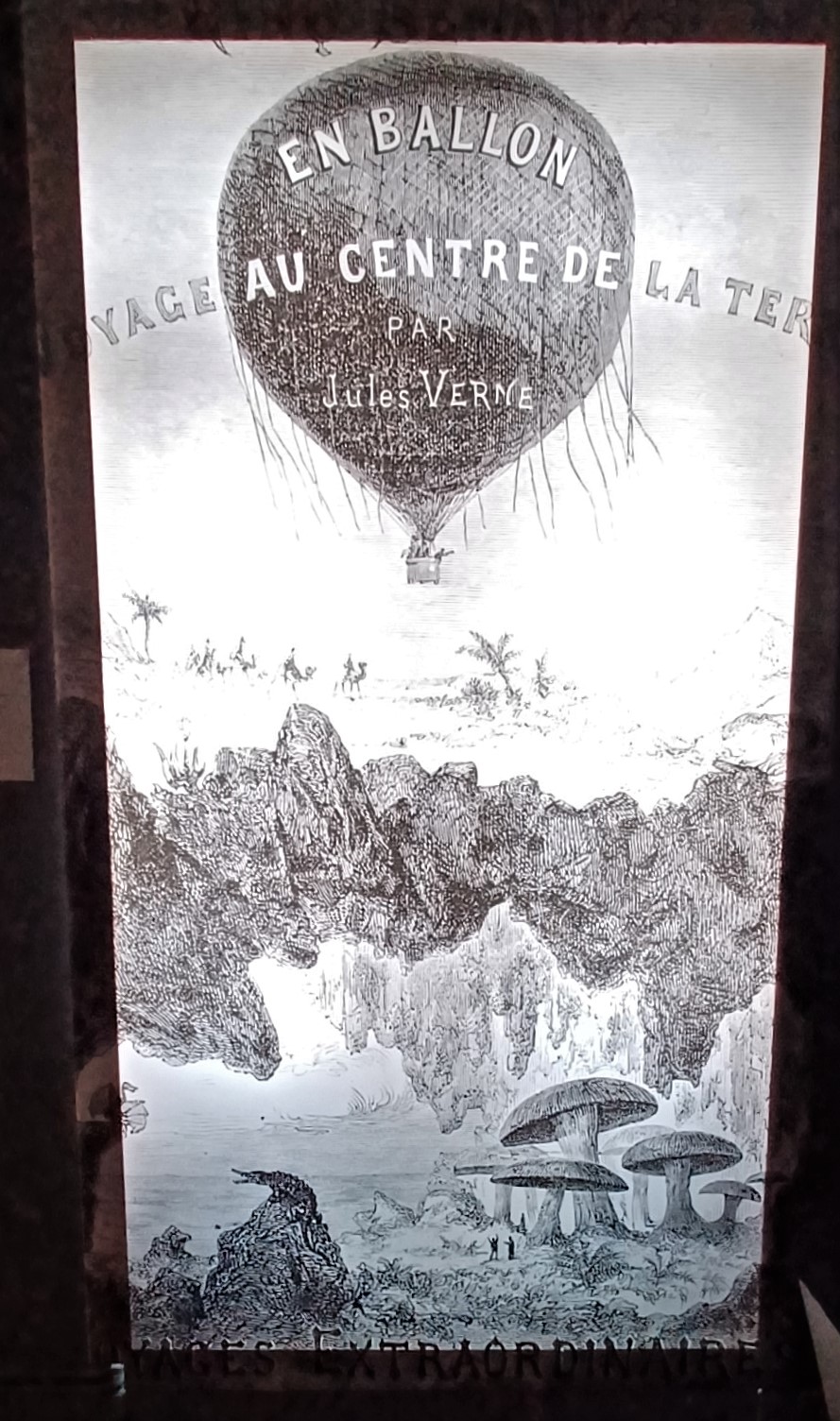

The Ile de Nantes is heavily inspired by one of its native sons – Jules Verne, who was born in the Feydeau district, not far from the Les Machines complex. He was the first science fiction author I ever read, so his museum was on my list of places to visit in Nantes.
The museum is in the Chantenay district, which was home to the working-class of Nantes at the turn of the 19th century. I took a long walk along the Loire River and up a fairly steep and cobblestone hill to find the two-story white house that houses his museum. The view is worth the walk.
Jules never lived in the home that now houses his work, though he visited regularly. Again, my QR code reader and translater app aren’t working, so I absorb what I can. The museum is well designed, albeit with most of the signage in French. The rooms guide you through Jules’ life as a Traveler, a Writer, his “Verniverse” and as a Playwright.
Jules was born February 8, 1828 and grew up during France’s Industrial Revolution (1848-75). He was an avid reader and started writing at age 18. He moved to Paris when he was 20 to study law but chose writing instead. His travels, which began when he was 30, inspired many of his stories. He wrote parts of Twenty Thousand Leagues Under The Sea while sailing one of his three boats, the Saint-Michel I. He wrote over 30 plays, which took me by surprise. He also kept himself updated on the latest sciences, studied travelogs and geography, and met with scientists and explorers. He was fascinated by technical innovation while at the same time being wary of its impact on society.
This is the first known letter written by Jules to his aunt on March 30, 1885. The placard stated that the letter notes the diligence that Jules put into writing his books, and a nascent interest in technical progress by his mention of the telegraph.

Some of the cases display items from his time period. There’s an Art Game from Paris dated 1885 with a placard that read: “Games are products of popular culture, providing information on social, cultural, and political achievements of an era. They also play a role in educating young people through their wide distribution among the population.” There was also a puzzle, echoing Jules love of geography. He was a member of the Geographic Society of Paris for 30 years.

A Trip To The Moon – the 1902 film by Georges Melies – was based on the Jules Verne novels From the Earth to the Moon and Around the Moon, as well as The First Men on the Moon by H.G. Wells. They were among the beautiful gilt and leather bindings in the extensive collection of books here, shelved in a glass cabinet that extends to the ceiling.
Jules Verne wrote of flying machines and submarines, and laid the foundation for future technologies based on projections from a 19th century aesthetic. In 1987, American author Kevin Jetter tapped into that aesthetic and coined the term “Steampunk” which became a worldwide cultural phenomenon.
There is a room devoted to his theatrical works. This is a reproduction of a paper theater from Michel Strogoff: The Courier of the Czar. Jules Verne wrote the novel in 1876 and adapted it for the stage in 1880. It was performed 2,432 times over the following decades. You can read more about the play on Wikipedia.
Because of the play’s popularity, the original cardboard theater was produced in 1883 by Alfred Jacobsen, a Danish lithographer. The facade is based on an Italian model, and the printed figures were glued to cardboard and operated by either cardboard or iron zippers.


This last piece is a floor to ceiling poster (pictured at top of article) advertising one of Jules Verne’s most famous works – Journey to the Center of the World.
Website: https://en-julesverne.nantesmetropole.fr
Hours: July 1-August 31 from 10AM-7PM. Outside of those dates, the museum is open 2-6PM every day except Tuesday.
Ticket price: 4 Euros
Tips: A smartphone is essential when visiting most museums in France, as English guides are often downloadable from a QR code in the absence of an audio guide. I also found my Google Translate app helpful for reading the placards in and near the display cases.
If you are a fan of gardens, exit this museum on the backside. A staircase off the patio will take you through a lush terraced garden and down to the main street where you can catch a bus, although I really enjoyed the walk along the Loire River on my way back into town.
* * *

Heather Daveno hails from Seattle, Washington, where she works as an office manager by day and a self taught textile artisan by night. In her spare time she is a “hobby historian” and is currently researching the female side of her family history for a book she plans to write, titled: “The Matriarch Diaries.”
You can see her current textile projects at August Phoenix Mercantile and her travels at Daveno Travels.